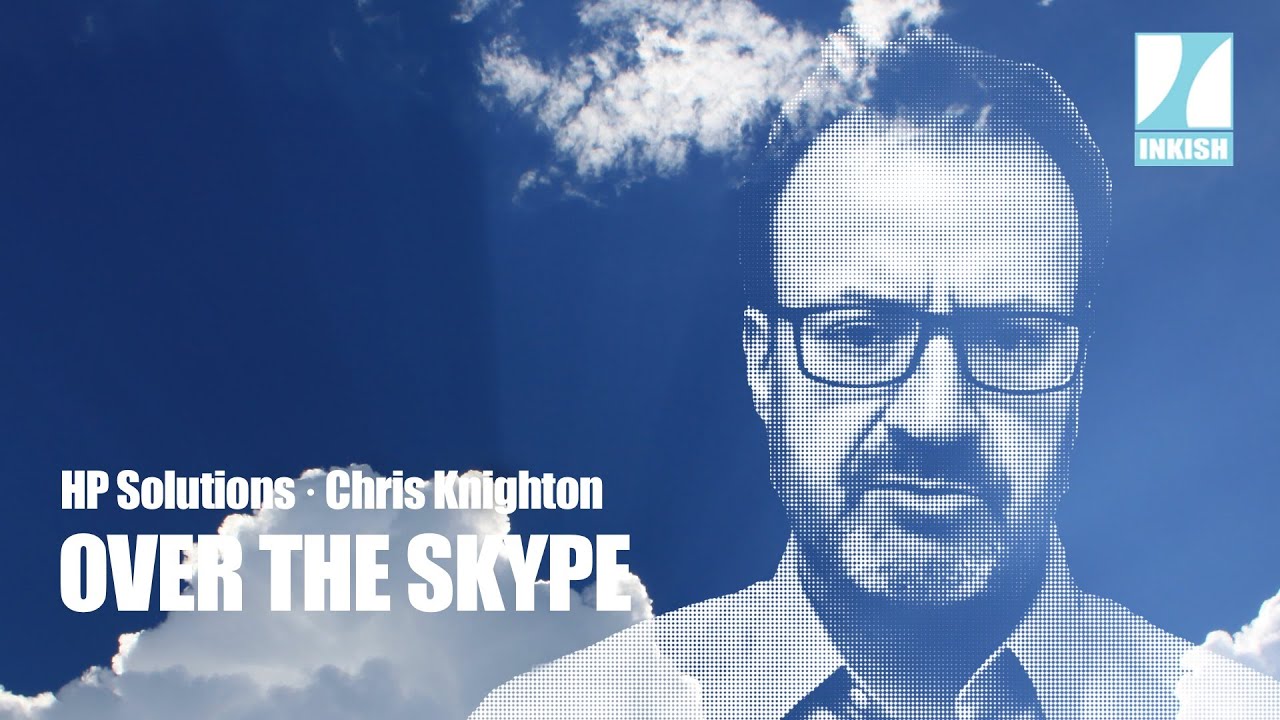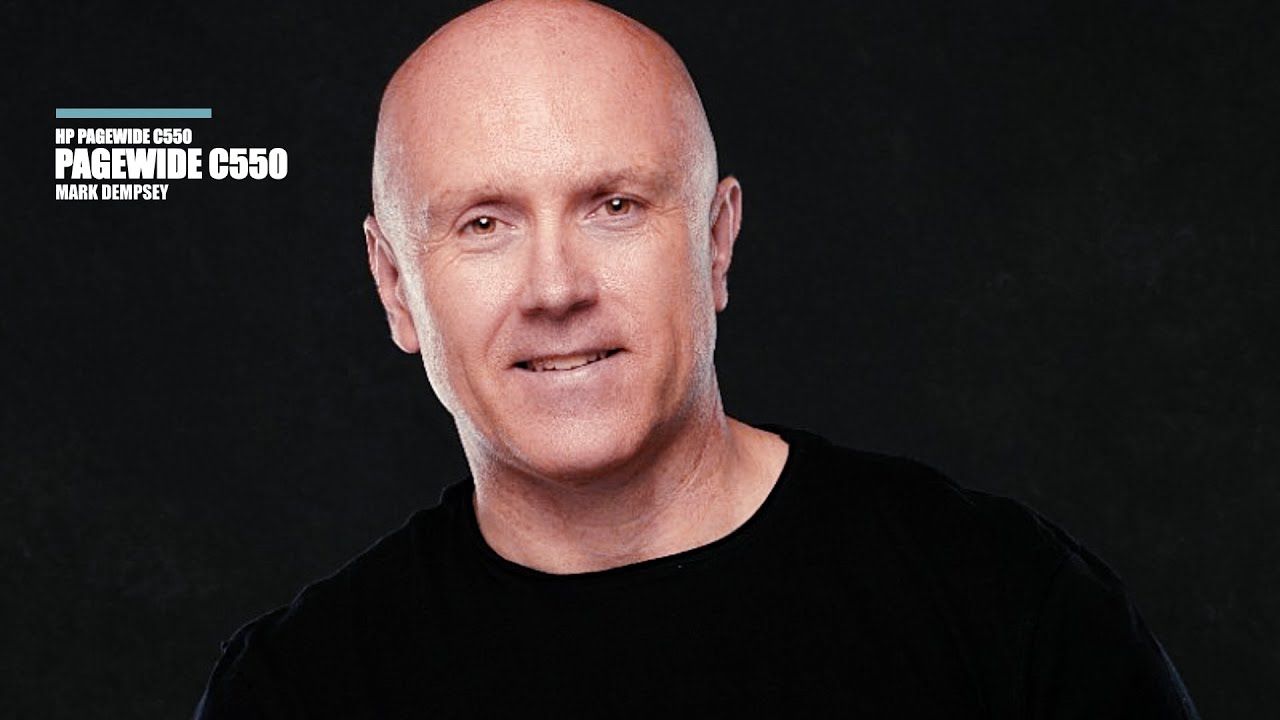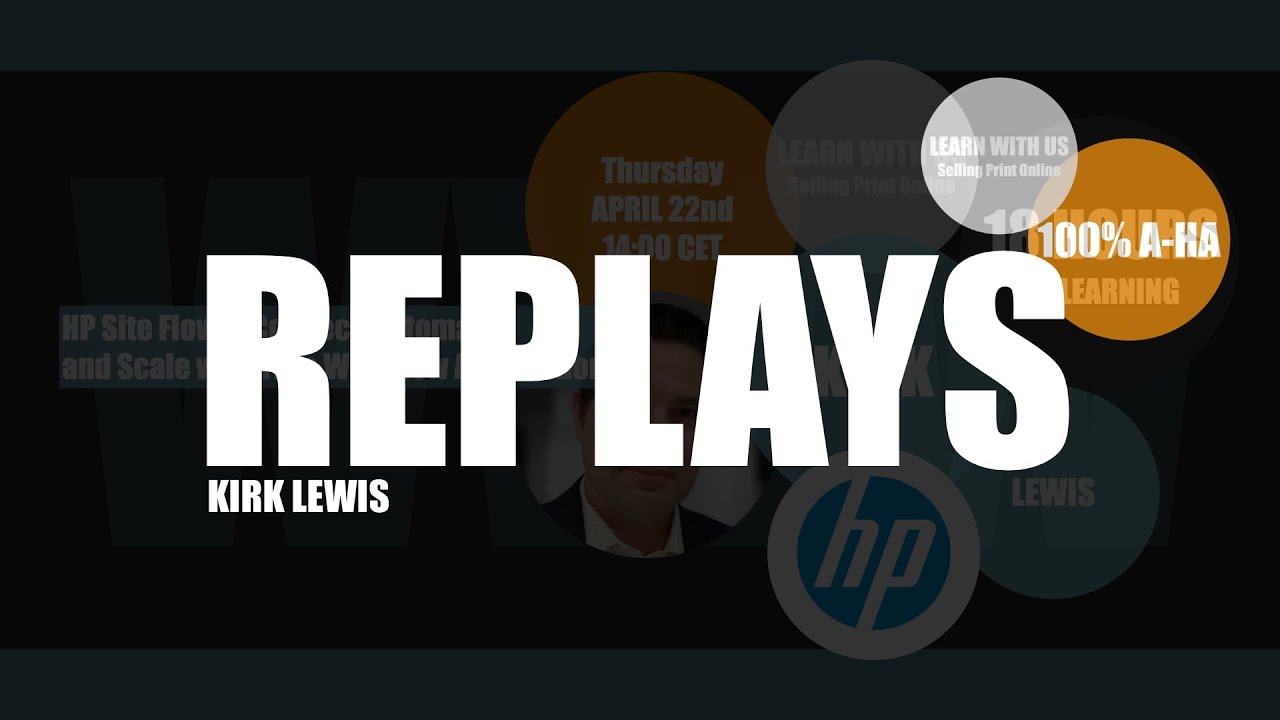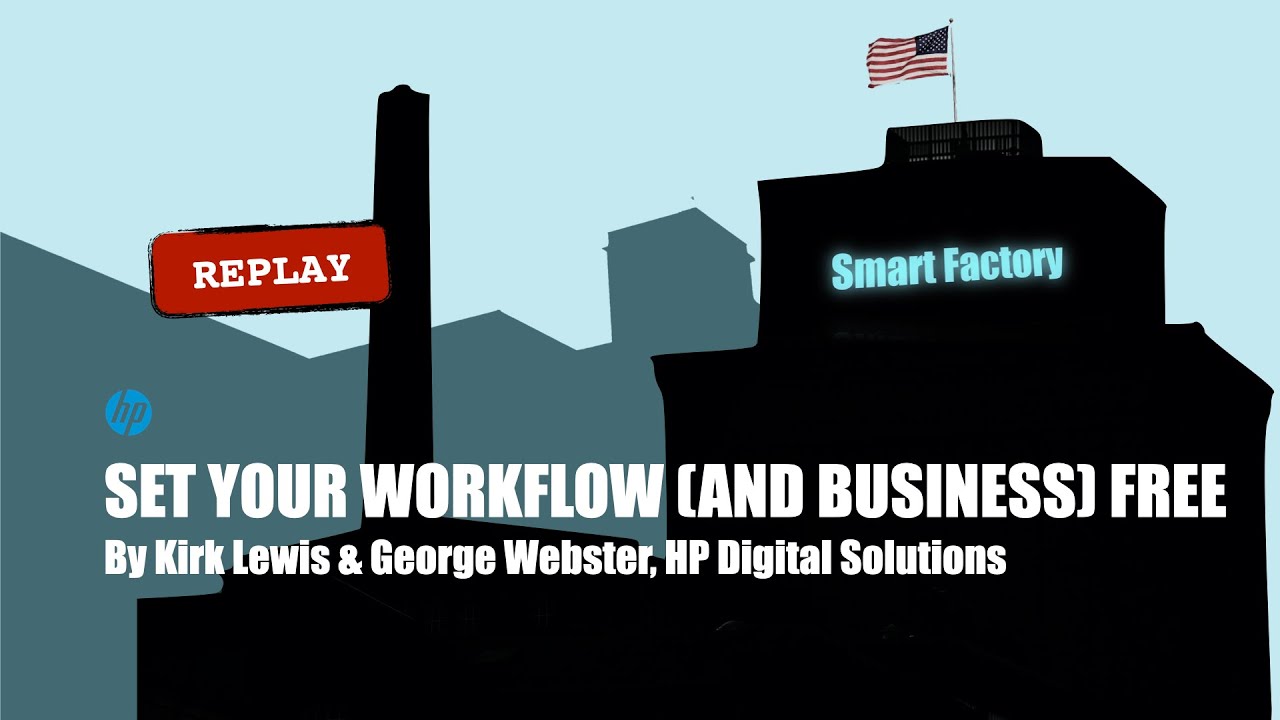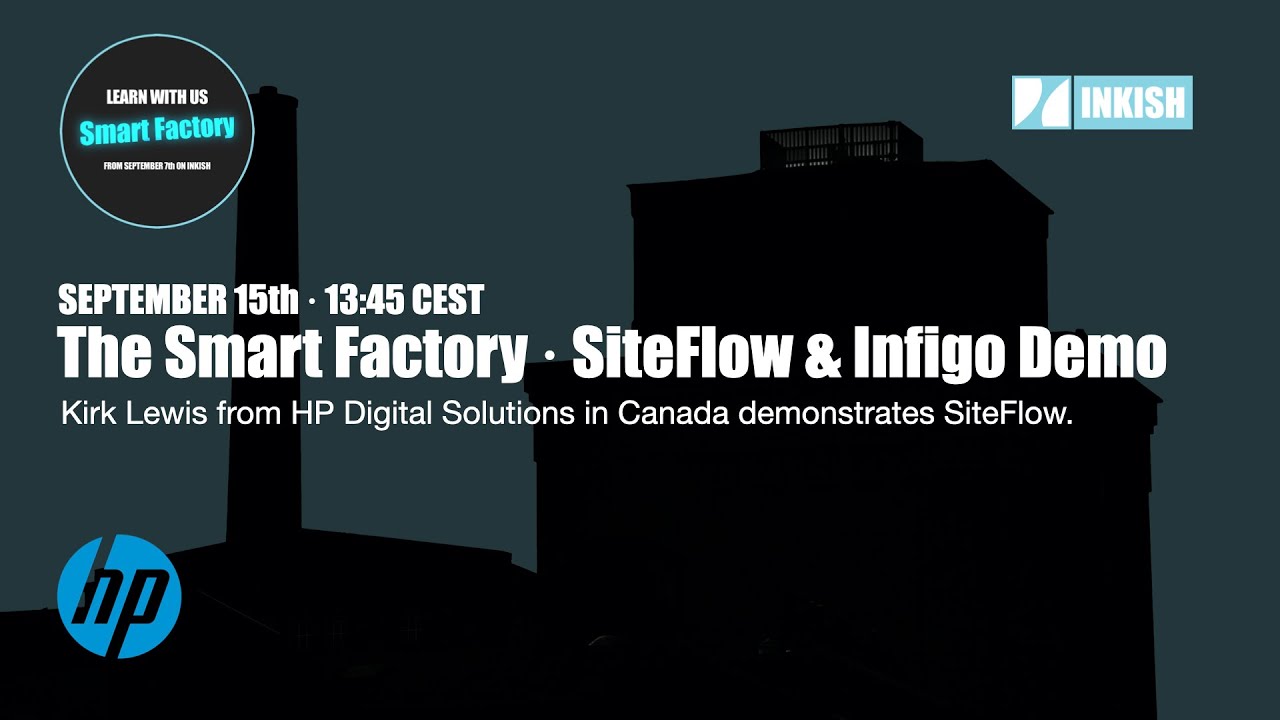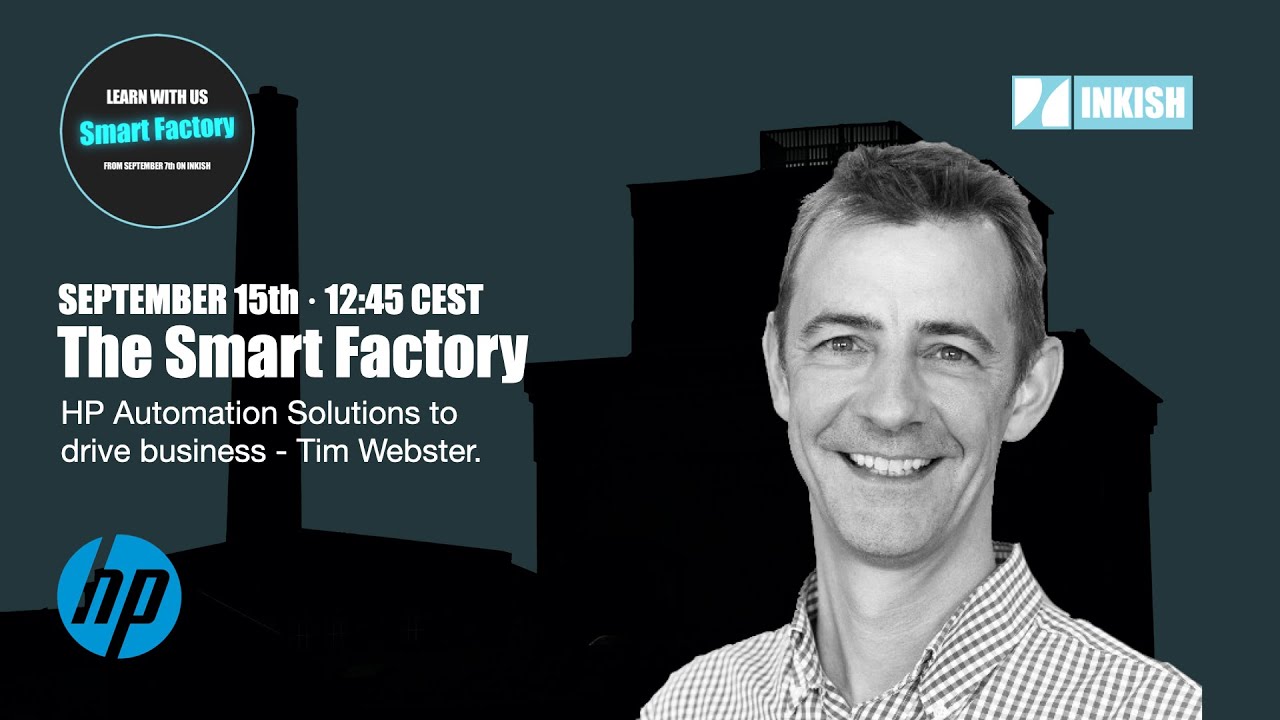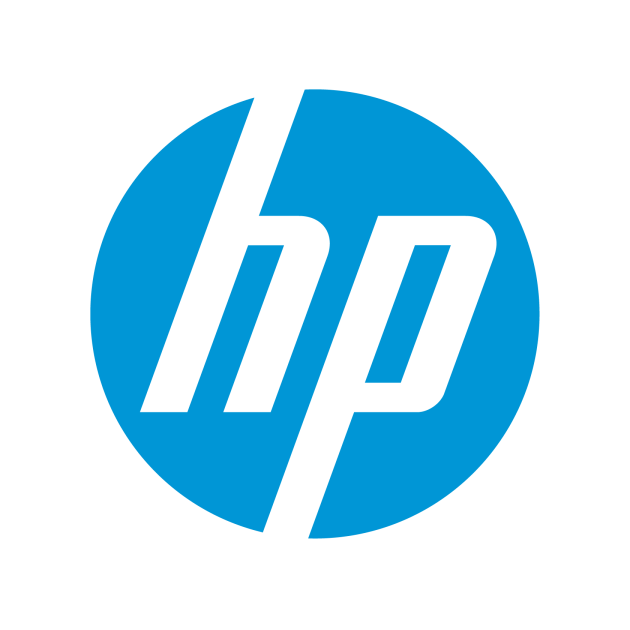Chris Knighton · Over The Skype · HP Soluions
Chris Knighton is the PSP Global Head of Sales at HP Solutions, and that is actually a role that is relatively new to him. Together with a business partner Chris Knighton ran his own company from 2013 where the vision was to create a software solution that would enable global brands to connect to their PSP’s wherever located. More than 600 companies and global brands have already taken this path, and recently HP acquired the company and merged it into the software solutions already known.
Great story and great to understand what HP Site Flow is capable of plus great to hear what the visions have been throughout the years.
As with all our ‘Over the Skype’ interviews, quality is limited to bandwidth, web-cams, and ability to literally LIVE mix the conversations. However, it works, and with Over the Skype, we will bring you more than 20 exciting people, and angles on the industry as it is right now.
Enjoy!
For further information – please reach out to GSBsolutions@hp.com
This is Morten from Inkish TV and I just counted, I think it’s my 17th of all the Skype interviews that I’m doing right now so I should be pretty used to it, but it’s still exciting. I have enjoyed all the 16 so far and I’m pretty lucky today because I am going to talk to Chris Knighton from the UK. And Chris, why don’t you start introducing yourself a little bit.
Hi Morten. How lovely to be talking with you today even though it is rather strange circumstances we find ourselves in. So I’m responsible at HP, my role title is Global Head of Sales for the solutions business. Ultimately, our solutions business is focused very much in two areas. We target as we are known for providing solutions to the print service provider community and we’ll come on to talking more about those, no doubt, through this discussion. But more recently, also focusing on brands as well. So I work with my colleague who’s very focused on taking new technologies and innovation into the brand sector, but my remit is predominantly pop print service providers.
But I think you are a little bit too humble, aren’t you? Because you started your own company, you said like six, seven years, was it 13 or something like that and then you developed software that had apparently appealed to HP. So your company and your services and your new role was acquired by HP not so long time ago, isn’t that right?
Yes. There’s a bit of a backstory there. Myself and my business partner decided to get the company off the ground around 2013, 2014. Our vision was to grow a network of connected brands and print service providers around the world. We had a conversation with HP at the time and HP said, “You know what guys, this sounds really interesting what you’re doing-
Also, they had been part of the story all the way long?
Not at that stage. We told them what we were doing and they said, “This sounds fascinating. Super exciting. We’re still figuring out what we’re going to do with Cloud and so on.” These were early days in Cloud computing. And they said, “Why don’t you come back and have a conversation with us when you’ve got 10 customers?” Anyway, we went back and we had a conversation when we had 10 customers, only a few months later, and then very quickly we found ourselves entering into a global licensing arrangement with HP so the HP would take our product to market and launch it as an HP solution at Drupa in 2016. And that’s what we did.
So you and your partner started developing the software. We’re going to talk about the software in a little bit, because it has changed name, right? It was One Flow and now it’s called something else, right?
Yeah. That’s right. Yes.
Yeah. So your journey started like getting up to Drupa with the customers in the backlog and a potential collaboration with HP I guess that everybody in a position like yours was thrilled that you got that invitation, weren’t you?
Well, it happened very quickly, I have to say, which was of course thrilling and exciting, but ultimately it was driven by our customers across the industry. We had a vision that through creating or shortening the gap and creating connections between brands and print service providers, we could help support exponential growth across the industry. And we were having discussions with many print service providers at the time and they were saying to us, “Chris, it takes sometimes weeks or even months for us to do a technical integration for online orders, doesn’t matter the source.” And we thought about accomplishing that within days or hours, if at all possible. And that was the beginning of the journey.
So when you started and you thought about the idea that your market approach was basically that you identified a problem from let’s say global brands that need printing across the globe and they want to be sure that they have same quality, maybe even same equipment and then you utilized that integration to PSPs in a new way or easier way?
Well, a lot of it starts with point-to-point integrations because if you’re a brand and let’s say you can be one of the world’s biggest names in print, Cimpress Vistaprint or you could be just getting a new greetings card app or photo to book off the ground. Your challenges are the same. When you need to be able to get your product printed in a local country, then ultimately you have to do a technical integration. Now, every country that you roll out to, ultimately every print service provider that you work with has their own systems and they all want to do their own technical integrations. But when you want to rule out in six or seven countries and each technical integration takes three months, you can imagine the impact that that would have on your business growth. It completely slows it down.
Yeah.
So our view was, let’s get the print industry away from this whole FTP mechanism, the dinosaur era, let’s fast forward it, throw it straight into the API world and we will provide a single gateway for every brand to connect to around the world and then we will be able to provide all the traffic to any PSP in the world.
So when you started, the data was not intended to be like an HP-only thing? And is that still the case today that if you acquire your solution, even when it’s now HP branded, that you can add any workflow, any print solution to the flow?
That’s a great question. It wasn’t originally intended as an HP solution. Of course, HP wanted a big splash at Drupa and we accomplished that. But I think over the last few years, there’s been a recognition that printers don’t just have HP kit. Let’s face it. And it’s important for adoption of our platform that it’s agnostic. Today we have, of course, the lion’s share of our customers are using RHP solutions, but for a number of products that are printed on Heidelberg, [inaudible 00:06:49], Xerox, Canon, printed in hot folder, integrated with other systems, et cetera, et cetera.
So now we’ll dig into the product, which is really interesting as well. But let’s step back here because just to understand it correctly. So if let’s say I’m a printer and I would like to supply a brand from another country, would I be the one that acquire your solution or will it be the brand that acquires it and distribute the jobs? Or how is the flow of who’s doing what?
So there are a number of solutions in the portfolio. We have our sightful solution, which we make available to print service providers. And even that comes into variants. There’s a full production pro/enterprise version, which we’re going to in just a moment, but there’s also a light version. So if you have a small number of orders or you’ve got your own production management capability, you can plug that into what already got. Over the other side up stream, how do we get the brands on board? Now, when we started, we started with one or two brands. Today, we have approaching 600 brands that are [crosstalk 00:08:02] through our platform. And we have not only our API, but we have a solution called brand center that we make available for free now, by the way, to any brand that wants to get connected.
We make our API available. The brand can do a connection very quickly. There’s a whole bunch of software development kits on all the major platforms that they can take advantage of to accelerate their integration. But once they’re then integrated, they can take advantage of brand center, not only as a portal for all their staff to see all of their orders, but they can set automated routing logic. So based on a country of destination, a particular skew or a print sales provider that they want to send orders to around the world. Our brand center connects seamlessly with either of our sightful solutions.
Fantastic. So with the brand center that is, I wouldn’t say a web to print solution but it’s kind of a web to print, but for the brand-specific, right? And I guess they can be branded with style sheets and whatever so it becomes part of a natural flow.
Well, so what we’ve done is we’ve recognized that actually, there are 10, 20, 30 different major leading web-to-print vendors out there and many of them have done integrations with us. I think the account is now about 15. So we can receive orders from those web-to-print platforms. We made a decision not to get into the web-to-print space instead being able, we wanted to focus on making easy for any provider, not just web-to-print, but websites, apps, et cetera, to plug into us. So we deal with everything there after.
Okay. But then I just, because as I said to you in the beginning, I might be stupid, but I simply don’t understand what does the brand central then do? Understand that it’s like instead of… Because if you use the API should need developers that understand the nature of how you integrate systems. So is it more like a UI to the API, so anybody can actually utilize the features that way around?
So it provides a number of capabilities for the brand. One is it provides them some guidance on how to use the API. Secondly, once you are connected, it provides a portal for all your customer success, your support staff within the brand so that they can see all of their orders, they can order reference, they can change shipping methods, et cetera, et cetera, but it also provides the routing logic. So if we want to route to multiple PSPs from service providers around the world, then they can do all of that. It’s all of the tools that they need connect to potentially tens or hundreds of PSPs in the world.
So it’s a kind of a patchbay basically where you say, “Okay, I have all these print and I would like them to be patched up to these different printers.” And then the logic is in the brand central, was that-
Yeah.
Okay.
That’s it.
I understood it. Thank you very much. Yeah, I was just afraid that I was too stupid to understand, but I think I got it. So one of the things that you mentioned that was really interesting is it seems like this is a very much about routing jobs between everybody who has a print job, basically, to make sure that you get them correctly delivered. Are you using SIP4 or JDS or what kind of data do you facilitate in your system?
So we accept JSON and we provide software development kits to translate PHP, Python, Java, JavaScript, et cetera, into JSON. But JSON comes through natively into our API and passed in the order data as a URL for the artwork, and then that goes via brand center, routed to a print service provider and then our sightful solution is obviously then responsible for fetching the artwork and looking after every aspect of production thereafter. Now JDF is used-
Yeah, because that’s a job ticket, right? I mean the JSON is more how you deliver the data, right?
Exactly.
Yeah. Yeah. Okay, great. So I can understand why HP has a big interest in this one because I think that for all the digital print vendors, it’s about ensuring as much volume as possible and it’s also to make it as easy as possible. So I think that this makes a lot of… Do you think that was one of the reasons why HP we’re interested in investing in your system?
I think that’s one of the reasons. I mean, just building on that and expanding it a little. If you look at some of the names that I mentioned earlier, companies like Zazzle, PhotoBox and Press, Pearson textbooks, et cetera, these are all now manufactured on the platform. We’re printing print runs that are 25 to 35 miles long on our speeding VR devices right through to printing single calendars of one. Now, these… Sorry, let me turn this off. These large print businesses are relying on our scalable infrastructure. So for instance, we were working with a customer last year. They submitted 100,000 orders in one hour. And that involved 2 million files.
Now, we set up three and a half thousand servers on AWS and we were processing over 35,000 API calls every second.
Wow.
Now, if you are one of the biggest names in print or the smallest emerging brand, you want to have an infrastructure partner that you can rely upon.
Yeah.
And that was critical for HP so that we are now able to take that proposition to some of the biggest names in print. And it means that the print service providers, they don’t have to build that infrastructure themselves because it’s included in our Cloud. So that was one of the reasons that that was very, very important. But another reason that I believe that was of key importance to them was a solution that we haven’t touched on yet. Because in addition to having our sightful solution and brand center and we were also the OEM developer of a solution called Piatsa.
Piatsa.
Yes. Now, Piatsa is a virtual warehouse for publishers to locate their books, their titles and hold them in the cloud. So it means that publishers not only routes their orders for production and have them printed on demand at any printer that they choose to have a commercial relationship with around the world, but it also means that their entire back catalog can be made available. So if you’re one of the biggest names in publishing, you’ve got a vast back catalog, which is no longer in print, but we can make that available, removing obsolescence, getting it printed locally, meaning that we’re reducing carbon emissions, et cetera, et cetera.
Yeah, and that is the story of the long tail that today publishers are able to not speculate in a print that’s worth the both physical shipping and warehousing and things like that, that the capabilities of print of one is and mass customization is obviously part of a very important value proposition, both for book publishers but also in the printing industry in general. So I think Piatsa sounds like really interesting. Is that something that is vitally adopted today or is that something that still needs a growth time or how is Piatsa doing?
Well, HP went to the market two years ago and talked about it at the London Book Fair, talking about what they were going to do. And then a year later, went back to London Book Fair and told the world about what they had accomplished. And obviously working with ourselves and working with Pearson. And now the level of interest that we are now receiving from publishers around the world has actually been phenomenal.
Yeah. And I guess that is like very important because that drives, again, as I said before, when you sell print, of course the equity of machines is important, but giving it food to produce print is maybe even more important because that is where the PSPs are making the money basically.
Exactly. And that’s my goal. So my goal is how globally can I drive more volume and increase the value of transactions for our brands and for our print service providers.
And in your position now working as part of HP, first of all, I congratulate you. These ideas are really great. I think that HP is lucky to have made you and your company and your services. I was just wondering how is the competitive situation when you look at both the workflow solution as well as the storage solution? Is that something that you are unique in the market with or do you have competition at all?
I think the competition from our perspective, certainly from a production management perspective is an interesting question because a lot of the customers that we talk to, they talk about workflow. And actually we don’t like to talk about workflow because it’s production flow. It’s end-to-end. So yes, we have a pre-press solution that’s called AutoFlow, you get that with site flow but our proposition is much wider. So when we receive, our print service provider receives an order in site flow, we validate the artwork, we perform any fix ups, we fetch and retrieve and validate all the order data, we barcode the job ticket, we schedule, we impose, we perform all the pre-press, completely automatically manufacturing buckets build up and once a clause threshold is achieved over the course of a day or an hour, then it automatically goes into production.
We can send automatically to presses if something needs to be read averted from an SRE3 to a B2 press that is re-imposed and rescheduled, all automatically, zero operator intervention. And then also throughout the complete finishing life cycle, we’re driving all of the finishing equipment either manually via screen or JDF or via barcodes instructions onto the info sheets. And then finally when we get to shipping, we’re also reconciling or aggregating consolidating shipments together so that if you’ve ordered three products and there could be different products produced a completely different times, they’re all going to go out in the same box and finally then, we’re integrated with all the major carriers around the world. The FedExs, the UPSs as the DPDs of this world, we create that shipping label and we create the customer’s documentation, print the invoice, all on a single barcode scan.
That’s-
So we’re doing that from order submission and we’re managing the complete life cycle right through to shipping.
Yeah. I’m sorry that I… The reason why I said workflow is, sometimes for example, I think that Heidelberg with their predict, they call it their infrastructure and the sightful light has many name. So I was just thinking that if you sometimes have a denominator in reference and people understand in what target we are or what area we are talking. It sounds like to me that with HP, both with hardware and software and especially with what you’re bringing to the table, it seems that the future should be really interesting for a PSP because with having everything automated in a one package delivery, it should be extremely valuable for a printing company. So is this something is only for the bigger printing companies or is it also accessible money-wise for smaller PSPs?
The solution is targeted at both ends of the spectrum. So-
That was why you said that you had like different solutions with the enterprise to the almost free version?
[crosstalk 00:20:48].
You didn’t say that.
Let’s talk about our site, our main site for product, which is pro and enterprise. We’ll come onto [inaudible 00:20:57] in just a moment because I’ve got some interesting news to share with you there. But our pro and enterprise solutions, at one end of the spectrum you’ve got your very small printer that’s got a job in print background, maybe doing 50, 75 jobs a day. They start moving to shorter runs, they’re getting to 120, 150, 175 and it’s chaos, absolute chaos on the factory floor. And that is the ideal time for them to begin to look at adopting our solution.
Now, because of everything that I’ve already set out regarding the automated batching, scheduling, et cetera, our larger print service providers on a peak day are dealing with 50, 60, 70,000 orders every single day. Every day.
That’s just crazy [crosstalk 00:21:42], right?
And you see these factories running and they’re running without operator intervention. They’re using the system to entirely move all the jobs around the factory floor. But the fantastic thing is that any print service provider, whether you’re doing 100 jobs a day or 100,000 jobs a day plus can take advantage of exactly the same platform. So it will grow with you.
Yeah. I think that is also like one of the communications I would like to get across when in this conversation with you is that, don’t switch off Inkish just now because this is for every printer basically, right?
Exactly.
So Chris, when ever I talk to people that have very complete solutions, one of the questions I always ask is with the comp… I understand the business awkward. I understand that you have also worked on making integration into existing workflows and systems as easy as possible. But to tell the story that you just did from a marketing and communication perspective, I guess that still requires a lot of work from your side, doesn’t it?
It does. And there are a number of early adopters in the industry. If we look at what’s happening with the shift towards online ordering, there’s a number of stats that are doing the rounds across the industry, but I think it’s around 75% of buyers, B2B buyers now prefer the convenience of online. So the millennials of today are not going to be picking up in a few years time, they’re not going to be picking up the phone and talking to a CSR. Now, we’re expecting the number of order takers to reduce substantially across the industry and therefore we have to equip our print service providers to be future proof, to be future ready.
I do understand that, but I was more thinking that when you have a solution like yours and HP’s in general, when you go into printing company, with all due respect, a lot of PSPs are relative conservative in the way that we do things, the way we operate our businesses, the way sometimes no new people should come in and tell how things should be done. And then I was just thinking that the more complex software is, the bigger the decision and the higher the knowledge level needs to be with your PSP when they are investing in this one. Because just imagine if you invest in a wrong software or a wrong solution, how much it can affect you. I think everybody has heard about the stories about a company’s almost broke because they bought SAP, right?
I’m not going to comment on SAP-
You don’t have to.
… discussion. One of the things that I would say is, back to the point regarding we have different solutions for companies at different stages in their life cycle. So our sightful lights solution is available on a click model for about, I think it’s about a buck a line item to begin with.
Okay. So that’s totally variable cost basically.
In 2005, it was going to cost you a buck and for the first six months we’ll give you, I think it’s 50 items for free every month. So those are rampart there that’s going to cost you nothing if you don’t use it. Now, once you’ve got confidence and once your volumes then begin to grow, then you might look at our pro solution. For our pro solution that gives you, pre-flighting, imposition, batching, scheduling, finishing, shipping, et cetera, even that starts at $1,500 a month-
Wow.
So we’re not talking $100,000-
No, no. This sounds like investment that are basically almost every printing company, right?
Yeah. Now, if I can separate the types of discussions that we have into different categories with different PSPs. And in the first category, I would say that we’ve got people that come to us and say, “We are desperate. We cannot call on the factory floor. It’s chaos. We’ve onboarded a customer. They submitting 50 orders a day, they’ve had a marketing campaign and it’s gone up to three to $400 a day. Help, please.” Now, that’s a no brainer. We can go straight in there and we can do a deployment very, very quickly.
Then secondly, and we have the types of customer that will… And if I go back and talk about some of the discussions that I was having with this type of customer a few years ago. And I was talking to them about our production management platform, and they say, “Chris, why do I need a production management platform for you? I’ve got five developers sitting in a room here. These are the guys that are providing my special sauce, my differentiator.” Now these same organizations and having conversations with me, say, “Chris, we need your software because my software team has now grown to 10 or 15 developers and my business has become a software business, and actually that’s not what we are. We are a print company. Oh, and by the way, Chris, my guys can’t keep up with the speed at which a site flow is moving and the new features that you’re bringing onto your platform. So I want to redeploy my resources in areas where there are more strategically, where they’re adding greater strategic value to our business. Therefore I want to consider adopting your platform.”
And I think that I would say is a quite consequent decision to make because I think every printer has tried to build their own web-to-print solutions and their own AMIA systems and everything like that. One of the things that I liked about what you said in the beginning is also that it seems that you have a strong focus on the APIs. That means that the IT departments that you refer to, instead of inventing front ends and core technology, they can figure out how they can integrate it into to all the things that are business critical rather than spending things that comes out of the box.
Yeah. So, where IT departments… And again it fits into the brand and if they were solving challenges for them too, but also within the print service provider. So most print sales providers have bought a number of applications over the years, predominantly because they’ve onboarded a client and they need to accomplish a specific task. And then of course it’s thrown out on IT to try and string it all together. And that brings with it a whole bunch of technical debt issues and how’d you move it forward through migration perspective and so on.
Now, what we intend to do, what we’re trying to do is provide an infrastructure backbone. So we will be responsible for your job traffic from entry to exit from the organization. If you then want to plug in ultimate impulse strip or a finishing line and drive it via GDF or you want to get information out and plug it into your CRM system or your accountancy system, we’ve got all the tools in our kit bag and we make those available to the PSP to accomplish that. We want to make it as easy as possible for people to get information in and out of the platform.
Of course that makes sense because the faster and the easier you can do it, the faster you can get an output that is valued by your customers. We have not so much time left and of course I want to hear your thing that you said that you want to mention. I Just have one question. When you got part of the HP family, was it easier for you as Chris Knighton to open the doors to the larger PSPs and get in or has that been the same from the beginning?
To now, I have to say there are lots of pros of being part of the HP family and that is a major one. And that HP is, it’s a big company, it’s well respected across the industry but it does bring with it the benefit that when you knock on a door, generally the door is opened and people at least give you the time to have a conversation. And many of the messages that we were articulating as a much smaller business now obviously carry a lot more weight and gravitas being part of the HP family.
And I think that also being part of the HP family gives you that opportunity to have a global reach with the software rather than being… With all due respect, I think that all companies that grows out of a need and define and everything is perfect, at some point, you hit the roof, right? So you need to have muscles in order to get out to the global audience. Right?
So looking at our brands, I talked about the fact that we’ve now got approaching 600 brands. I want to see that being 6,000 in a few years time. And I’m confident that we can accomplish that with HP. And similarly from a print service provider perspective, now that we are again a part of the HP family, we’re currently in around 35 countries. Last year we had around 200 million items flow through our platform would be produced in those countries and that’s growing at 50% per annum.
Wow.
50.
Wow.
So I want us to be working with more PSPs, more countries. We’re now being approached by brands who want us to help them find print service providers and a portfolio of different countries around the world. So if you’re listening and watching to this, get in touch.
Yes, definitely.
We want you to be part of our community so that we can give you exposure to some of these brands.
Sounds great. Anything you want to add? Otherwise-
Yeah.
Yep.
There is one thing that I want to add. I touched on our sightful lights solution. Now our sightful lights solution doesn’t require any local installation and it’s entirely browser based. It’s secure means of the brand or anyone else connecting and submitting orders to. Now, due to the coronavirus situation, one of the things that is concerning to us is that a number of print service providers around the world are either going to have to temporarily close for a few days, could be a few months and are certainly going to be short staffed. So we’re making our sightful light solution available to any HP customer around the world who wants to take advantage of it for free for the next four months. And that will enable these print service providers to be able to outsource jobs to their partners, to their friends, to other organizations that they want to work with in a country or internationally, absolutely no cos.
That sounds awesome. I hope that we can help bringing that message across. As I said to Tim many times, I think that we are a small media out of Denmark, but we try to be serious at what we do. So maybe we reach at least the right people. Right? So, Chris, it was a great to talk to you. It was enlightening for me to understand a little bit more about what you’re offering. And you probably know that Tim, he has called me several times for me to talk about this. And Inkish, we don’t really talk so much about products, but you did it so brilliantly. So that was much better.
Thank you very much.
Yeah, thank you.
If anyone is interested in either our products, but importantly, the coronavirus offer that we’re making available, please ask them to email us at gsbsolutions@hp.com. That’s gsbsolutions@hp.com.
Okay. So you’ve got your marketing message delivered anyway. Okay. Thank you very much.






























































